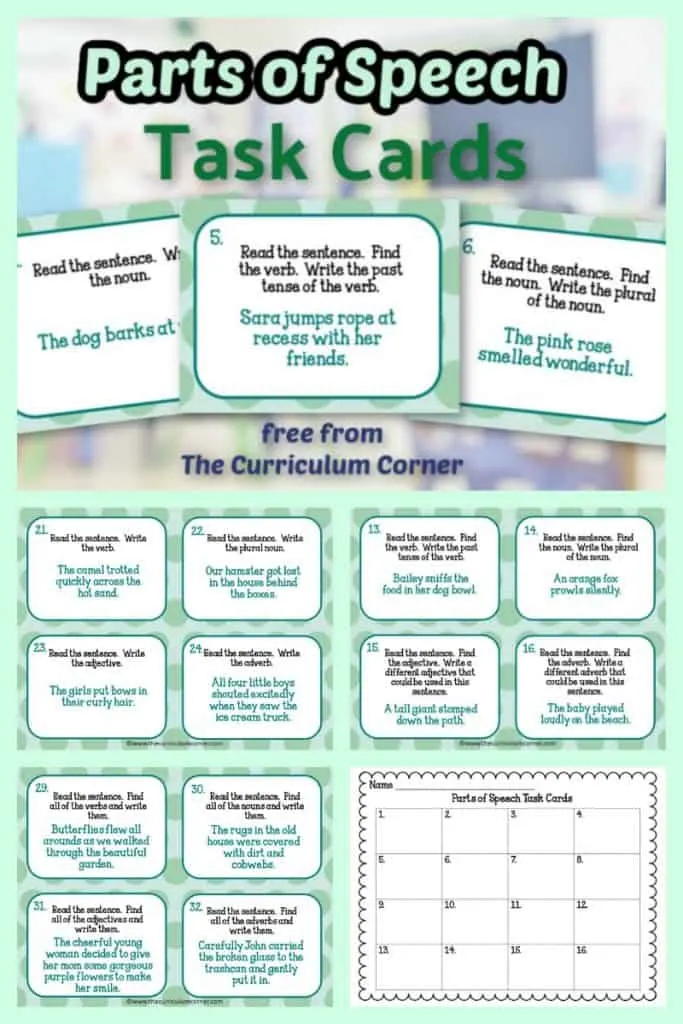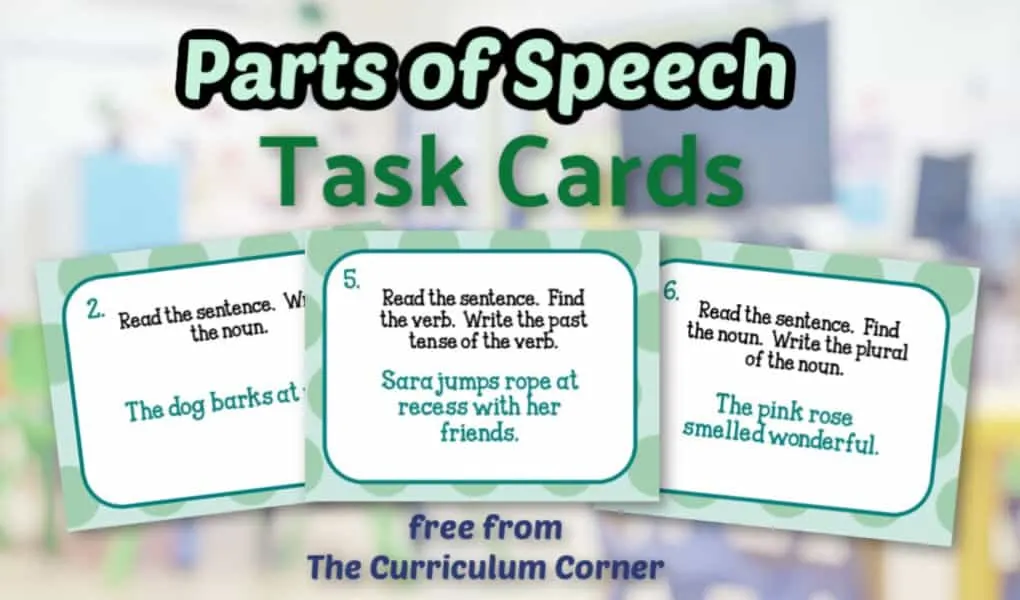This Parts of Speech Scoot activity is great to get your kids up and moving to read and form different nouns and verbs and identify adjectives and adverbs.
This is another free resource for teachers from The Curriculum Corner.
This Parts of Speech Scoot activity gives your students practice with identifying and forming various parts of speech. This is intended for second and third grade. It’s perfect for a review any time of the year.
Adding a little movement to your lessons throughout the day is so helpful for your students. Scoot activities are an easy way to incorporate movement, yet still provide practice and engagement for your students.
For this activity, print and laminate the cards and copy a Scoot recording page for each student.
Use just the front for a smaller class or shorter Scoot game. Copy both sides if you have a bigger class. Differentiate by adding the third recording page for some of your students who are ready for a bit more challenge.

How To Set Up our Parts of Speech Activity
As a Scoot Activity
- To play, choose the number of cards you wish to use and place the them at various locations in the room. This can be at student seats, on the floor, stuck to walls and even at the teacher’s desk. Be sure to create a “path” of sequential cards as you place them around the room. The rotation of students will go more smoothly if the next numbered card is easy to locate.
- Next, tell students to walk to a card anywhere in the room.
- They will begin the activity by writing on their Scoot recording page at the same number of the card where they are standing. (So if they walk to card #12, they will write their answer for that problem in box #12.)
- After an appropriate amount of time (about a minute to a minute and a half we think), give the students a signal of some kind – perhaps ringing a bell or tapping a musical triangle. They will then move on to the next numbered card (in numerical order).
Teaching Your Students to “Scoot” in the Right Way
- The activity continues until students have traveled to each of the cards you have chosen to use.
- Of course, you don’t have to use all the cards in the download. You can use only the number of students in your classroom if it is less. We have found that having a few extra helps with the flow of the scoot activity. Students can travel to another card if the one they are headed towards becomes occupied before they get there.
- If you have more than 32 students, they can either double up at a card if needed or you can direct them to check their work for a few minutes if all the spots are taken.
- To differentiate the activity, you may choose to give some of your students only the first 16 cards to complete. You could also simply put “X”s through the boxes you don’t want individual students to do. You might also provide the additional four challenge cards to some of your students as well.
As a Write-the-Room Game
- Instead of using the cards with a scoot activity, you could also make it a write-the-room type of activity.
- Just as directed for the Scoot activity, place the cards around the room in various spots, but this time the cards don’t need to be in a sequential “path” of any kind.
- Students move to cards at their own pace and don’t need to go in a sequential numerical order. You will just need to remind them to write answers in appropriately numbered boxes.
- This is a good alternative to a traditional scoot activity because students don’t feel rushed to complete the tasks on the cards. In this way, they can also finish up the activity at a later time if needed.
Some teachers like to use Scoot activities as a review of a skill or for an assessment of some kind. If so, you may want to think about providing an answer key for them to check their answers. This would help student to determine if they need additional practice or support before the assessment.
You will find our Parts of Speech Scoot cards and the recording pages described above here:
Parts of Speech Scoot
You might also like:
Scientist Themed Parts of Speech Sort
Parts of Speech “I have…Who has…?” Game
Parts of Speech Anchor Charts & More

